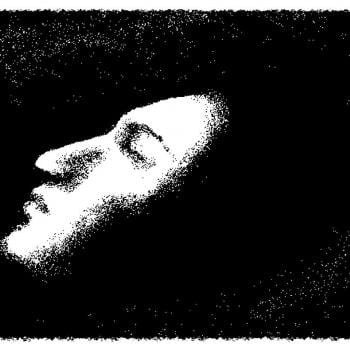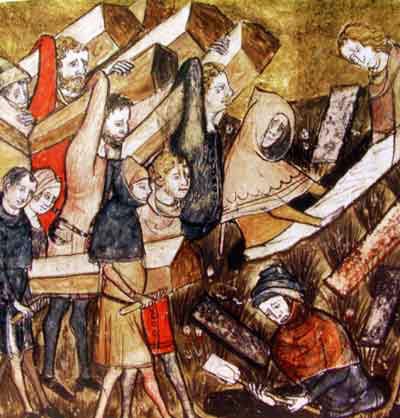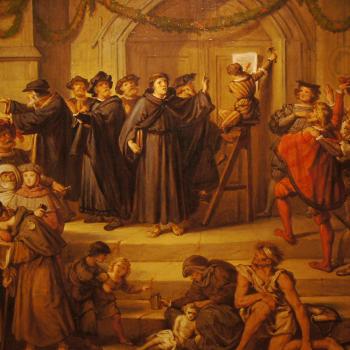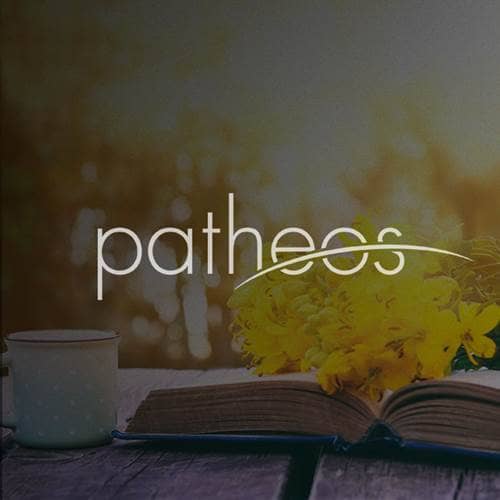- Trending:
- Pope Leo Xiv
- |
- Israel
- |
- Trump
- |
- Social Justice
- |
- Peace
- |
- Love

RELIGION LIBRARY
Roman Catholicism
Sacred Texts
Mark was the first of the four Gospels committed to writing, probably in the late 60s or early 70s C.E., for an audience familiar with Judaism at a time when Christianity was moving ever more exclusively toward Gentiles. Matthew's Gospel was written ca. 80-90 for a similar audience, hence the existence of some explanations of Jewish customs. Luke's Gospel and Acts of the Apostles, its continuation, date from about the same period and come from the hand of a Gentile writing for Gentiles, which is why there is great emphasis on Jesus' role as savior for all peoples regardless of race, gender, or nationality. John's Gospel, from the very end of that first century, was several generations removed from Jesus' lifetime and was born in a time of Roman persecution, which is also true of the Book of Revelation, which explains the apocalyptic tone.
Letters from and attributed to Paul and others appear before, during, and after these decades, too, along with other gospels and letters that were not ultimately accepted into the list of books approved for the New Testament. In pieces and taken together, these writings (graphai) were shared among the earliest Christian communities as the new faith was spreading. Paul and other Church leaders in the first two centuries of Christianity referred to documents they assumed their listeners knew even as they added to the group.
Decisions had to be made about canonicity because different groups calling themselves Christian relied on different texts. If the Church was to be catholic, all had to agree on the standard body of textual evidence for the faith. Not everyone agreed on which writings were to be considered definitive; competing books and canons were in circulation. In the first half of the 2nd century, for example, a gnostic teacher named Marcion accepted only Luke's Gospel but rejected the nativity narrative and Paul's treatment of Jesus' incarnation and passion because he did not accept Jesus' humanity.
By the 3rd century, two types of lists had emerged. First, there were books considered part of the canon, from a Greek word (kanon) meaning a measuring stick or ruler; it came to denote the accepted Greek texts that contained the truth about Jesus' life and teachings. Second, there were books that were not considered canonical because they contained untruths, misunderstandings, or legends. By the late 100s, the four Gospels were accepted as standard, although there were others. About 200, Christians were referring to an Old and a New Testament. By the middle of the 3rd century, there was growing uniformity about the canon with lists that are quite close to what became the definitive New Testament.
In the early 4th century, Emperor Constantine ordered a bishop named Eusebius of Caesarea to make fifty copies of a collected text for churches in Constantinople. Eusebius, operating under the authority of the Roman emperor in this case, accepted what nearly everyone agreed on: the four Gospels, Acts, thirteen Pauline letters, 1 John, and 1 Peter. He then accepted the validity of others: James, 2 Peter, Jude, 2 and 3 John, Hebrews, and Revelation. He rejected as part of the New Testament other documents in circulation, although some of these are still part of accepted Catholic tradition: gospels of Peter, Thomas, and Matthias; Acts of Andrew, Paul, and John; the Shepherd of Hermas; the Epistle of Barnabas; the Didache; 1 and 2 Clement; Peter's Apocalypse. By the late 300, there was a consensus among bishops and theologians of the twenty-seven books that make up Christian scripture. The canon was then set about 367 by Athanasius, bishop of Alexandria, in an Easter letter relying on and canonizing ("giving authority to") Eusebius's list, which was then accepted by Rome in 405. A few decades before, Bishop Damasus I of Rome had set his one-time secretary Jerome to the task of translating the standard collection from Greek into the everyday Latin language (Vulgate).
Jerome's translation was the norm through the Middle Ages. Parts of the Bible were translated into local languages like Dutch and English in the late medieval period, most notably by John Wycliffe and his circle at Oxford, but these efforts were often criticized by church authorities. Martin Luther translated the entire Bible into vernacular German early in the 16th century. Luther wanted to put the Bible into the hands of everyone, since he believed all should read it for themselves and not rely on extracts at Mass and on an ordained priest for a definitive interpretation. In response, the Council of Trent in the mid 16th century took pains to say that only the Roman Catholic Church, not individual Catholics, could definitively interpret the Bible with full and final authority. Most Protestants relied on scripture as the ultimate authority in Church matters, while Catholicism held to the twin rules of scripture and tradition--the latter including statements by popes and councils, among other definitive writings such as those by the fathers of the early Church period, which enjoyed the authority of apostolic succession.
Study Questions:
1. What are the four Gospels central to Roman Catholicism? Describe each.
2. Why was developing a biblical canon crucial to Catholicism’s success? When was it developed and what did it include?
3. Where did Protestants and Catholics disagree on use of the Bible? Why?










